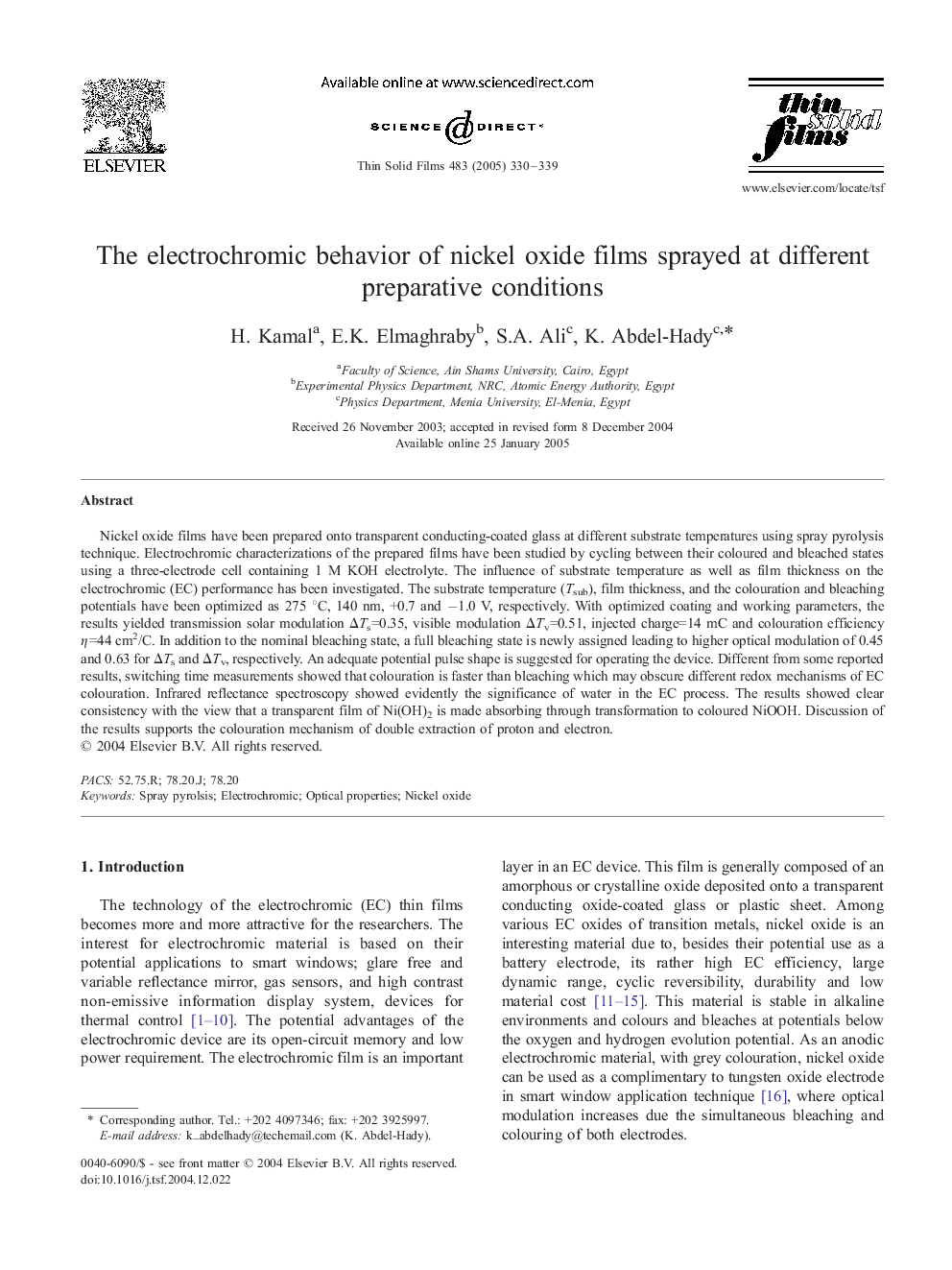| Article ID | Journal | Published Year | Pages | File Type |
|---|---|---|---|---|
| 9812641 | Thin Solid Films | 2005 | 10 Pages |
Abstract
Nickel oxide films have been prepared onto transparent conducting-coated glass at different substrate temperatures using spray pyrolysis technique. Electrochromic characterizations of the prepared films have been studied by cycling between their coloured and bleached states using a three-electrode cell containing 1 M KOH electrolyte. The influence of substrate temperature as well as film thickness on the electrochromic (EC) performance has been investigated. The substrate temperature (Tsub), film thickness, and the colouration and bleaching potentials have been optimized as 275 °C, 140 nm, +0.7 and â1.0 V, respectively. With optimized coating and working parameters, the results yielded transmission solar modulation ÎTs=0.35, visible modulation ÎTv=0.51, injected charge=14 mC and colouration efficiency η=44 cm2/C. In addition to the nominal bleaching state, a full bleaching state is newly assigned leading to higher optical modulation of 0.45 and 0.63 for ÎTs and ÎTv, respectively. An adequate potential pulse shape is suggested for operating the device. Different from some reported results, switching time measurements showed that colouration is faster than bleaching which may obscure different redox mechanisms of EC colouration. Infrared reflectance spectroscopy showed evidently the significance of water in the EC process. The results showed clear consistency with the view that a transparent film of Ni(OH)2 is made absorbing through transformation to coloured NiOOH. Discussion of the results supports the colouration mechanism of double extraction of proton and electron.
Related Topics
Physical Sciences and Engineering
Materials Science
Nanotechnology
Authors
H. Kamal, E.K. Elmaghraby, S.A. Ali, K. Abdel-Hady,
